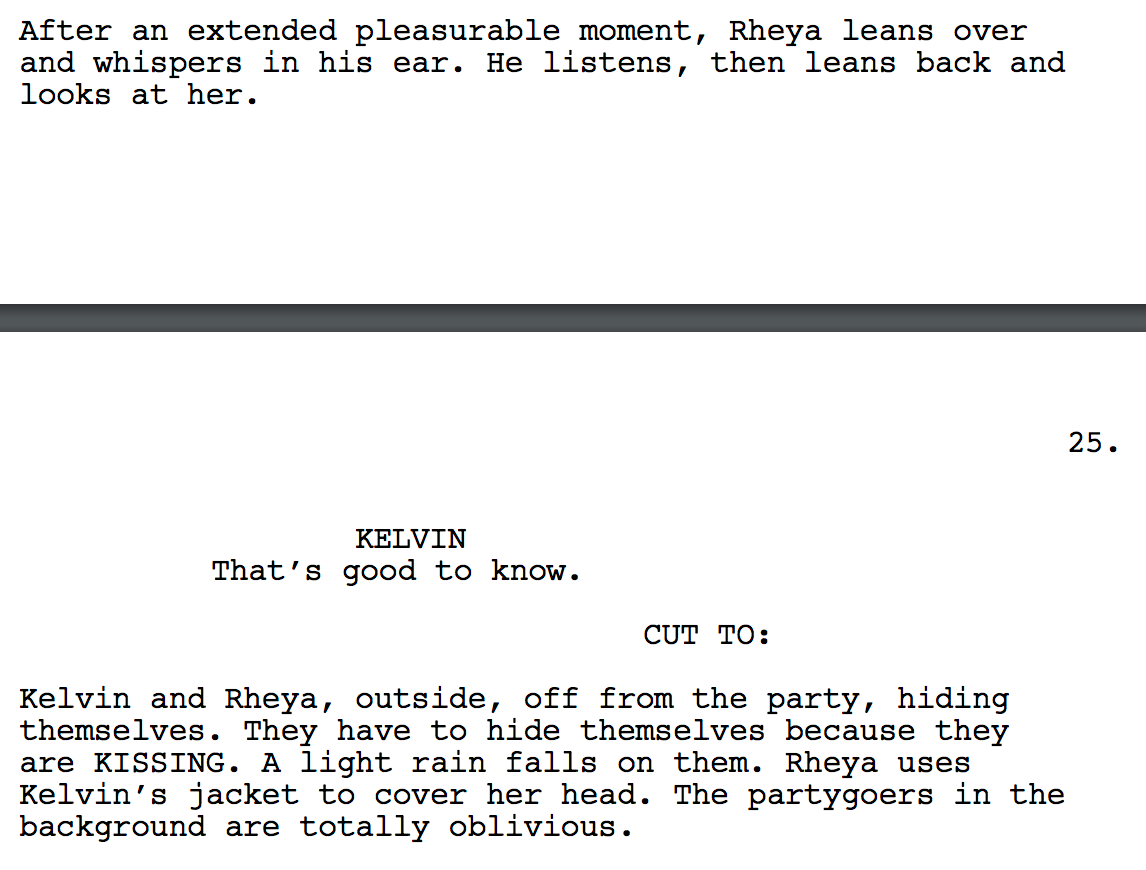

Steven Maras, ‘In Search of “Screenplay”: Terminological Traces in the Library of Congress Catalog of Copyright Entries: Cumulative Series, 1912–20’ (2009), Film History 21.4, pp. Lowe, Jr., Cinema-Television Library, USC. 146.īroadway (Universal, 1929), Screen Play and Dialogue Arrangement by Edward T.

Janet Staiger, ‘The Hollywood Mode of Production, 1930–60’, in David Bordwell, Janet Staiger, and Kristin Thompson, The Classical Hollywood Cinema: Film Style and Mode of Production to 1960 (London: Routledge, 1985), p. Clark, ed., What Women Wrote: Scenarios, 1912–1929 (Frederick, MD: University Publications of America, 1987), p. 1237 quoted in Torey Liepa, ‘The Devil in the Details: Thomas Ince, Intertitles, and the Institutionalization of Writing in American Cinema’, in Cynthia Lucia, Roy Grundmann, and Art Simon, (eds), The Wiley-Blackwell History of American Film, vol. Janet Staiger, ‘Dividing Labor for Production Control: Thomas Ince and the Rise of the Studio System’, Cinema Journal 18.2 (1979), p.
Slugline screenplay definition how to#
Stuart Blackton, Library of Congress, Washington, D.C.įrances Marion, How to Write and Sell Film Stories (New York: Covici-Friede, 1937), p. John Emerson and Anita Loos, How to Write Photoplays (New York: James A. Torey Liepa, ‘Entertaining the Public Option: The Popular Film Writing Movement and the Emergence of Writing for the American Silent Cinema’, in Jill Nelmes (ed.), Analysing the Screenplay (London: Routledge, 2011), pp. 349–67.Ĭlaudia Sternberg, Written for the Screen: The American Motion-Picture Screenplay as Text (Tübingen: Stauffenburg Verlag, 1997), pp. Kristin Thompson, ‘Early Alternatives to the Hollywood Mode of Production: Implications for Europe’s Avant-Gardes’, in Lee Grieveson and Peter Krämer (eds), The Silent Cinema Reader (London: Routledge, 2004), pp. 173–92.Īlexander Schwarz, Der Geschriebene Film: Drehbücher des Deutschen und Russischen Stummfilms (Munich: Diskurs Film, 1994).Ĭolin Crisp, The Classic French Cinema, 1930–1960 (Bloomington: Indiana University Press, 1993). (Madison: University of Wisconsin Press, 1985), pp. Richard Corliss, Talking Pictures: Screenwriters in the American Cinema (New York: Overlook, 1985).ĭavid Bordwell, The Way Hollywood Tells It: Story and Style in Modern Movies (Berkeley: University of California Press, 2006) Kristin Thompson, Storytelling in the New Hollywood: Understanding Classical Narrative Technique (Cambridge, Mass.: Harvard University Press, 1999).ĭavid Bordwell, Janet Staiger and Kristin Thompson, The Classical Hollywood Cinema: Film Style and Mode of Production to 1960 (London: Routledge, 1985) Janet Staiger, ‘Blueprints for Feature Films: Hollywood’s Continuity Scripts’, in Tino Balio (ed.), The American Film Industry, rev. Lizzie Francke, Script Girls: Women Screenwriters in Hollywood (London: British Film Institute, 1994). Larry Ceplair and Steven Englund, The Inquisition in Hollywood: Politics in the Film Community, 1930–1960 (New York: Anchor/Doubleday, 1980). Marc Norman, What Happens Next: A History of American Screenwriting (London: Aurum, 2008), p. Tom Stempel, Framework: A History of Screenwriting in the American Film, 2nd ed. See in particular Steven Maras, Screenwriting: History, Theory and Practice (London: Wallflower, 2009), p. In Scott MacDonald, ed., Screen Writings: Scripts and Texts by Independent Filmmakers (Berkeley: University of California Press, 1995), p.


 0 kommentar(er)
0 kommentar(er)
